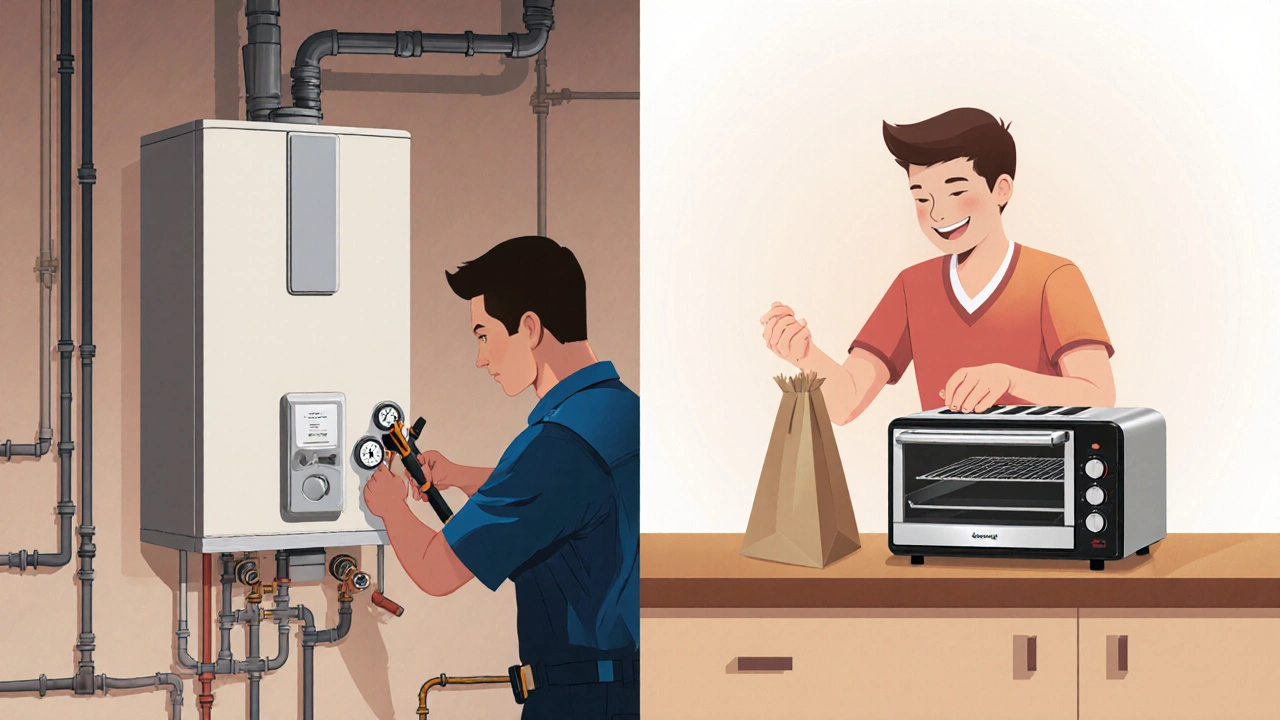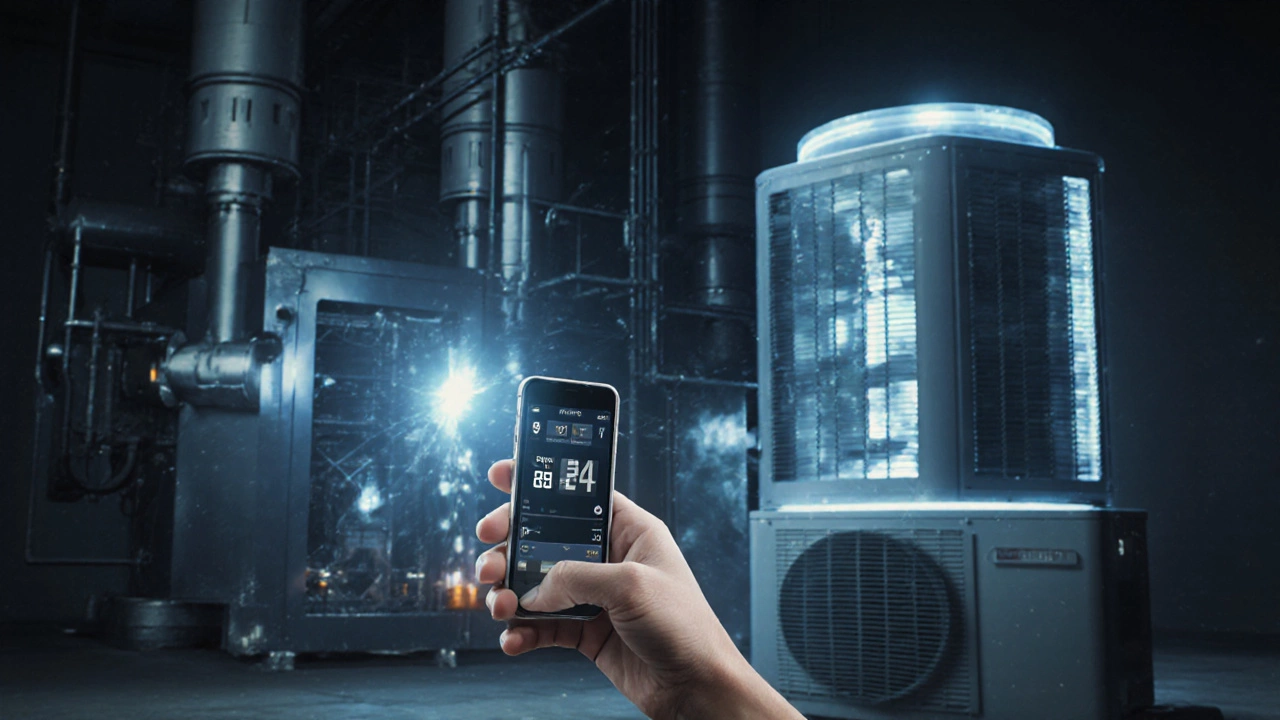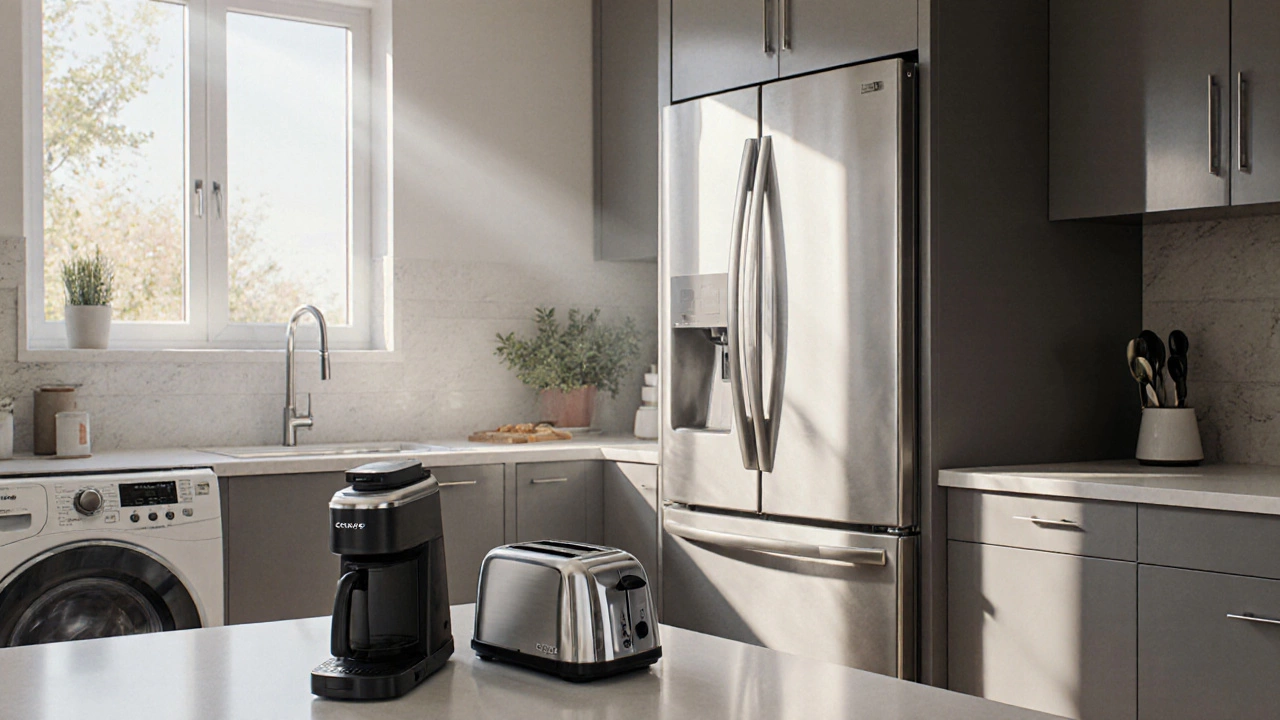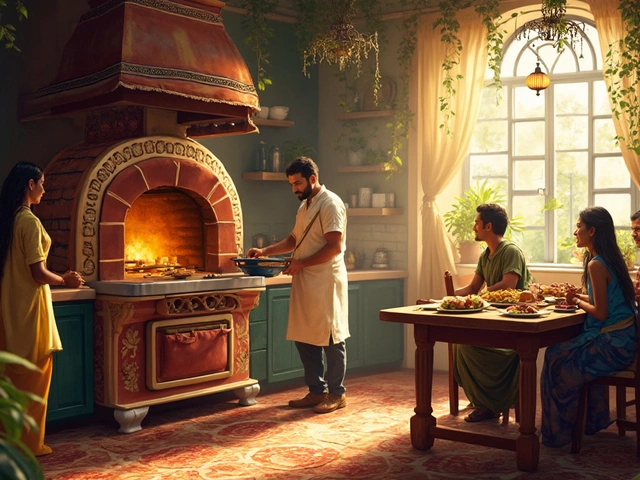Ever looked at your coffee maker and wondered, "Is this really an appliance?" Or maybe you’ve argued with a friend over whether a toaster counts the same way a fridge does. The line isn’t always clear - and that’s okay. But if you’re trying to figure out repair costs, warranty coverage, or even what to buy for your kitchen, knowing what counts as an appliance matters more than you think.
What Exactly Is an Appliance?
An appliance is any device designed to perform a specific household task, usually powered by electricity or gas. It’s not just something that plugs in - it’s something that appliance does a job that used to take manual effort. Think washing clothes, cooling food, heating water, or cooking meals. These aren’t gadgets. They’re tools built into the rhythm of daily life.
The key difference between an appliance and a regular electronic device? Functionality and permanence. A Bluetooth speaker plays music - it’s electronics. A refrigerator keeps food cold - it’s an appliance. One enhances your experience. The other supports your basic living needs.
Major Appliances vs. Small Appliances
Not all appliances are created equal. Most people split them into two groups: major and small.
Major appliances - also called white goods - are large, built-in, or freestanding machines that handle core household functions. These are expensive, often installed permanently, and usually require professional repair. Examples:
- Refrigerators and freezers
- Washing machines and dryers
- Dishwashers
- Ovens, stoves, and cooktops
- Water heaters
- Boilers and heat pumps
- Range hoods and extractor fans
These are the machines you call a technician for. They’re wired into your home’s plumbing, gas lines, or electrical system. If one breaks, your routine stops.
Small appliances are portable, plug-in devices that make life easier but aren’t essential to your home’s infrastructure. They’re cheaper, easier to replace, and often fixed by the user. Examples:
- Toasters and toasters ovens
- Coffee makers
- Blenders and food processors
- Microwaves
- Electric kettles
- Vacuum cleaners
- Ironing boards with built-in steamers
Here’s the catch: microwaves sit in the middle. They’re plugged in like a toaster, but they’re often built into cabinetry and cost more than a blender. Many repair shops treat them like major appliances because of their complexity and cost to fix.
What Doesn’t Count as an Appliance?
Just because something plugs in doesn’t mean it’s an appliance. Here’s what usually falls outside the definition:
- Televisions and sound systems
- Computers and laptops
- Smartphones and tablets
- Light fixtures and lamps
- Power tools like drills or saws
- Electric blankets and heating pads
These are electronics or tools. They serve a purpose, but they don’t maintain the core systems of your home. A lamp gives light - it doesn’t cook, clean, or cool. A drill helps you build - it doesn’t wash your clothes.
Even some gadgets that seem like appliances aren’t. Think smart thermostats. They control temperature, but they don’t generate heat. They’re sensors and controllers - not appliances themselves. The furnace or heat pump they talk to? That’s the appliance.

Why the Distinction Matters
Knowing what’s an appliance affects your wallet, your time, and your peace of mind.
If your fridge dies, you’re not just inconvenienced - you’re risking spoiled food, potential contamination, and a costly replacement. That’s why major appliances get extended warranties, energy rebates, and professional repair services. You don’t get those for a toaster.
Insurance policies treat them differently too. Homeowners insurance often covers major appliances under “dwelling” or “personal property” if damaged by fire, flood, or power surge. Small appliances? Usually only covered if they’re part of a larger claim - like if your entire kitchen burns down.
And when it comes to repair, the rules change. A broken washing machine might need a licensed technician to check the water valve, motor, or control board. A coffee maker that won’t heat? You can often replace the heating element yourself for under $20.
Regional and Legal Differences
Definitions can shift depending on where you live. In Hamilton, Ontario, building codes classify water heaters, furnaces, and boilers as “fixed appliances” - meaning they’re part of the home’s structure. That affects permits, inspections, and who can install them.
In the U.S., the Department of Energy defines major appliances under the Energy Policy and Conservation Act. They include refrigerators, freezers, dishwashers, clothes washers, and water heaters. These are the ones subject to federal energy efficiency standards.
Some places even tax appliances differently. In Canada, major appliances are often exempt from provincial sales tax if they’re essential to the home - but small appliances like blenders or air fryers are taxed like any other consumer good.

What About Smart Appliances?
Smart fridges, Wi-Fi-enabled ovens, and voice-controlled dishwashers are everywhere now. But here’s the truth: adding Wi-Fi doesn’t change what the appliance is. A smart fridge is still a fridge. A smart washer is still a washer.
The tech inside might make it easier to use - you can check if your laundry’s done from your phone - but the core function hasn’t changed. Repair shops still need to fix the compressor, the drum, or the heating element. The app glitch? That’s a software issue. The motor failure? That’s an appliance issue.
Some manufacturers try to label everything “smart” to justify higher prices. But if the appliance doesn’t cool, wash, or heat properly, the smart features won’t save you.
Real-Life Scenarios: What Would You Fix?
Let’s say your kitchen stops working. Here’s how to think about it:
- Your oven won’t heat? That’s a major appliance. Call a technician.
- Your toaster won’t pop? Replace it. It’s cheaper than repairing.
- Your dishwasher leaves dishes dirty? Could be a clogged filter (easy fix) or a broken pump (needs a pro).
- Your coffee maker leaks? Most are plastic and cheap. Buy a new one.
- Your heat pump makes a loud noise? That’s a major appliance - and it’s probably your home’s most expensive system after the furnace.
The rule of thumb? If it costs more than half the price of a new unit to fix, and it’s over 8 years old, replace it. For major appliances, that’s often $800-$2,000. For small ones? $30-$150.
What’s Next?
If you’re trying to decide whether to repair or replace something, start by asking: Does this device keep my home running? Or does it just make my life a little easier?
If it’s the first - you’re dealing with an appliance. Treat it like one. Schedule maintenance, check warranties, and don’t ignore strange noises. If it’s the second - it’s a convenience. Buy it, use it, replace it when it breaks.
Knowing the difference saves money, reduces stress, and helps you make smarter choices - whether you’re buying, repairing, or just trying to understand why your fridge won’t stop humming.
Is a microwave considered a major appliance?
It depends. Built-in microwaves installed above the stove or in cabinetry are often treated like major appliances because of their installation complexity and repair cost. Countertop microwaves are usually considered small appliances - they’re portable, cheaper to replace, and often fixed by users. Most repair shops will service both, but the pricing and parts differ.
Are air fryers appliances?
Yes, air fryers are small appliances. They’re countertop devices that cook food using hot air, similar to a convection oven. They plug in, aren’t permanently installed, and cost less than $200. While they’re popular, they’re not essential to home systems like a fridge or water heater. If one breaks, replacing it is usually cheaper than repairing it.
Is a smart thermostat an appliance?
No. A smart thermostat is a control device, not an appliance. It doesn’t generate heat or cool air - it tells your furnace, heat pump, or AC when to turn on. The actual heating or cooling unit is the appliance. Think of the thermostat as the brain, and the furnace as the muscle.
Do all appliances need professional repair?
No. Only major appliances typically require licensed technicians - especially if they involve gas, plumbing, or high-voltage wiring. Small appliances like toasters, blenders, or kettles are often user-repairable. Many issues are simple: a broken latch, a clogged filter, or a worn-out heating element. Always check the manual first. If you’re unsure, it’s safer to call a pro.
Why do some appliances get energy rebates and others don’t?
Governments offer rebates for appliances that use a lot of energy and have a big impact on your utility bills. That’s why refrigerators, water heaters, heat pumps, and washing machines qualify. Small appliances like coffee makers or blenders use far less power, so they don’t qualify. The goal is to reduce overall energy demand by encouraging upgrades to the most energy-hungry devices.



